What do Chickens Eat? A Complete Guide to Feeding Adult and Baby Chickens
Chickens and baby chickens will eat just about anything so you need to know that what you are feeding them is good for them, and that they are getting everything in their diet necessary to keep healthy and laying if you keep laying hens.
Unfortunately, not everything that people give their chickens is always good for them. For instance, I have seen people give their poultry leftover pizza and other cooked meals that has far more salt or fat in them that is good for their system and the salt puts a strain on their kidneys. Don't feed them rubbish!
My chickens are very healthy and that is because they are well fed, given a balanced diet, given plenty of greens, and a variety of foods. I don't feed them rubbish and I give them a diet that is totally natural and healthy.
I have never seen a chicken queing up at Pizza Hut, if you get my drift! I feed my chickens food not only for nutrition, but also for medication against worms and for general good health. And they certainly seem to have their favorite foods.
Mine love corn on the cob before anything else, which can cost a fortune if you have to buy it in. Corn is easy enough to grow, along with sunflower seeds. Let the sunflowers dry on the plants before cutting off. You can ration the seeds or feed the sunflower heads to them whole. They love them!
Just feed with caution as sunflower seeds make chickens fat if fed too much, which can lead to problems with egg laying.
I also feed my chickens bran and grain, but more particularly malted grains, if you can get them they are excellent. However, use sparingly - 1 handful of malted grains for 3 chickens mixed with their other food is enough. Malt is one of the best chicken feeds you can get for keeping chickens healthy.
When fed to baby chickens when they are ready for grains it helps promote growth. If you can't get hold of malted grains, give them cod liver oil and malt in their wet mash about once or twice a week. 1 small teaspoon for 3 chickens is all they need.
On the berry front, my hens love strawberries, raspberries and all edible berries except blackcurrants. So what else do chickens eat?
Well, before that, we have to look at what chickens need, rather than what they will eat.
Feeding Chickens for Good Health
Chickens need a number of components to their diet in order to be good layers and be healthy.They need:
- carbohydrates
- fats
- proteins
- minerals
- vitamins
- grit and oyster shell
- fresh water replaced daily
Chickens are creatures of habit. They like to be fed at the same time every day and should be fed at least twice a day, once in the morning, and once in the evening, about an hour before you lock them up at night. Many people feed their chickens 3 times a day.
Some people feed wet food in the morning, and grains in the evening, while others do the reverse. Each group has their reasons for doing so, and each believe that their way is the best way. So, it really is a matter of opinion.
Feeding Chickens Grain and Sunflower Seeds
There are lots of types of grain available for chicken feed; Indian corn, cracked corn, barley, oats, wheat and buckwheat. And then, malted grains can be given, as already mentioned.
Too much grain and not enough greens is bad for chickens and Indian corn can make your laying hens too fat if you overfeed. If you keep bantam chickens, it is better to feed them cracked corn as the pieces may be just too big for them.
Barley is liked more than most other grains and can also be given whole or steeped in water for a while. Besides malted grains, buckwheat is one of the best grains for good chicken health and care, especially for laying hens. It can be given whole or ground into a meal.
At least 2 types of grains should be fed to your chickens every day.
I also include sunflower seeds here. Of course, not a grain, but usually given with grain. Sunflower seeds are an excellent source of Vitamin B and protein and give your chickens glossy feathers.
Don't feed them too much as again, this can make your poultry fat, but during the moulting season your chickens will benefit highly from being fed sunflower seeds, and don't hold back when they start to loose their feathers. Sunflowers seeds are also an excellent source of manganese which is vital for healthy chickens.
Feeding Chickens Thousand Headed Kale
Thousand headed kale is a brassica that will give you continuous green food for your chickens through most part of the year. There is nothing worse, when keeping chickens than having to spend more money than you need to buying in greens from your grocer. Instead grow thousand headed kale.Like cabbage, thousand headed kale likes a rich soil and good cultivation. Sow the seed from early spring to late summer in your vegetable gardens and cover the seed with a 1/2 inch of soil. Tamper down and water well.
When the plants are 4-5 inches high, transplant to 3 feet between plants. Your plants will grow to a height of 3-4 feet and will give you plenty of leaves for your chicken food.
Feeding Chickens Mash
Chicken mash should be given daily, either in the morning or in the evening. Mash can be given either wet or dry and should make up about a quarter to a third of the daily ration, and should be made up predominantly of bran but can also be mixed with middlings and corn chops. Some powdered kelp can also be added to the mash.
Feeding Chickens Kelp
This is an aside that I had to throw in here. So what are the benefits of including kelp in a diet for chickens?
- Kelp is an excellent source for the important minerals and vitamins chickens need in their diet.
- Kelp provides iodine which is important to regulate the metabolism.
- Kelp helps towards the formation of good shells.
- Kelp increases egg production
- Kelp produces deeper colored yolks
Kelp can be bought as a meal or powdered and you sprinkle it lightly on the food. No more than 1% of the total feed. Kelp is a type of seaweed that comes from cold, deep waters and is then dried and ground after excess salt has been removed.
Although most chickens prefer mash wet, it is best given to them dry so that it doesn't spoil in their feeding dishes and troughs.
If the mash is given wet it should be mixed with enough water so that it is crumbly, but never sloppy. Any wet mash that hasn't been eaten after feeding should be removed immediately before it sours and makes your chickens sick.
During the winter months, when snow is thick on the ground, feeding chickens a warm mash will be appreciated.
Feeding Chickens Grit and Oyster Shells
I feed my chickens crushed shell and grit every day and it always gets eaten. Grit and Oyster shell is the most important ingredient in a chicken's diet after clean water. This is essential as part of the daily chicken diet because it provides the oyster shells provide lime and calcium necessary to form good shells on the eggs. Grit helps grind the food up in the crop.
Never mix the grit or shell with food, but give it to chickens separately or as a free-choice food that is available to them when needed.
I also take the egg shells and save them until I have a bowl full. Then I cook them in the microwave for 5 minutes on High and grind them up finely before feeding them back to the chickens. Never feed them egg shells that haven't been pre-cooked and ground up finely as this can lead to egg eating, which is a habit that is almost impossible to break.
Feeding Chickens Flowers and Herbs
Some chickens eat elderberries with no ill effects, although these are said to be toxic.
Other flowers chickens will tuck into include marigolds (the petals make their yolks even yellower); violets, border pinks and sweet peas.
Feeding Chickens Kitchen Scraps
Cooked spaghetti or rice is fine, as long as it is not too salty. Make sure that the spaghetti has been chopped up as the chickens can choke on the long strands and battle to get them down, although they do get there in the end!
Never feed chickens processed foods, or foods high in salt.
Take your vegetable peeling from the night before and boil them up, put them through the food processor and include them in your mash.
However, what can chickens eat from your kitchen scraps?
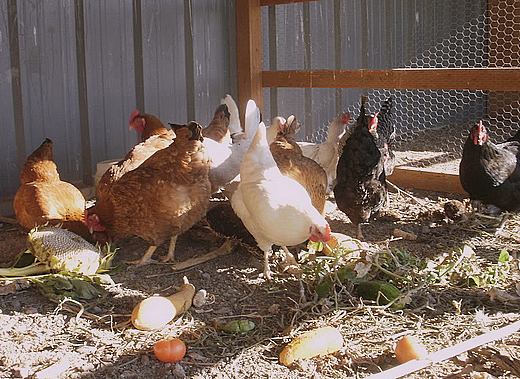
60 Good Foods for Feeding Chickens
1) beetroot tops2) sweet corn; on the cob, frozen or canned
3) sunflower heads
4) spinach
5) cabbage
6) lettuce
7) chard
8) kale
9) broccoli
10 tomatoes
11) watermelon
12) raw and cooked pumpkin and seeds for worms
13) cooked potato peels and mashed potatoes
14) rocket
15) dandelion
16) comfrey; don't believe what the FDA tell you, comfrey in small doses is fine
17) sorrel
18) wilted nettle leaves
19) cucumbers
20) cooked oats - make sure there is not too much salt in it
21) bananas without the peels
22) raisins
23) cooked noodles - again make sure there is not too much salt here
24) yogurt (plain)
25) sour milk that has clabbered
26) apples, quartered and seeds removed
27) chopped boiled egg
28) scrambled egg
29) cooked rice
30) cooked peas, corn, beans left over from the night before
31) cooked quinoa
32) radish tops
33) turnip tops
34) crickets and grasshoppers
35) meal worms
36) ripe tomatoes
37) parsley
38) sage
39) chopped up celery
40) pumpkin, zucchini and melon leaves
41) small amounts of canned cat food - great for protein if they are not able to get into the garden to pick up worms and grasshoppers
42) cooked or raw asparagus, although mine are not fond of it and some people avoid feeding altogether
43) beetroot
44) bread, in moderation. I only give them a slice of whole grain once in a blue moon
45) cauliflower
46) Brussels sprouts
47) carrots, raw and cooked. If given raw, grate
48) grapes, seedless only and raisins as a treat
49) melon
50) cooked oatmeal
51) cooked rice
52) cider vinegar
53) manuka honey for chicken health - use sparingly
54) raw peanuts, without salt and not cooked
55) feeding chickens meat scraps without fat is fine, bone meal, as well as cooked fish and shellfish
56) alfalfa
57) onions, particularly good for chickens health, especially the eyes, but may taint the eggs if overfed
58) kelp powder
59) charcoal
60) middlings, bran
Feeding Chickens Protein Foods
Feeding chickens on a budget? You can get meat scraps and bones from your butcher and give them to your chickens for the much needed protein that they need.
Giving meat scraps meal worms and fish to your chickens is important, especially if your chickens don't have access to new grass everyday. If they did, they would be getting their protein needs from grasshoppers, bugs and earthworms.
You can also feed your chickens liver and sheeps pluck. Any meat, bones or offal given must be thoroughly boiled first. If you offer raw meat to your fowls it can lead them to eating each other's feathers. Bone meal can be mixed with a wet mash.
With regards to the meat scraps, liver and pluck, boil and then chopped up finely before giving each fowl about a tablespoon each, and no more. Any leftover water that you have boiled the meat in can be used up in the mash or other food for your poultry.
Excess eggs can also be boiled and chopped up and given with food.
Feeding Chickens Carbohydrates
Mixing your potatoes with bran, middlings or Indian meal is an excellent food for good health and laying especially if you give your chickens the greens that are also so necessary to their diet.
Vitamins in Feeding Chickens
The golden rule in feeding chickens is not to overfeed them. Fat chickens make poor layers, they become lazy and lethargic and this is not what you want. But you cannot make your chickens fat by feeding them greens. You can however, make them fat by feeding them too much corn, potatoes or sunflower seeds.
I also take my vegetable scraps from the night before - potato peelings, carrot peelings, bean ends, pumpkin peelings and boil them up until soft. I then throw them into the food processor with a little bit of the left over water and blitz them for a couple of minutes until small. They love this, and feeding chickens this way not only becomes more economical but you are also giving them the nutrients they need, especially if they are confined to a run and don't have total access to your homestead, farm or garden.
If I have kitchen scraps like carrots, parsley, celery ends, tomato ends, cucumber, etc. I don't cook these, but put them through the food processor so that they are small and more manageable and then feed them to the chickens raw.
Chickens also love having fun and to alleviate boredom hang a small cabbage in the pen and see them enjoying pecking at it througout the day. Hanging up spinach, beetroot or turnip tops also gives them pleasure.
Minerals in Feeding
Chickens
There
are a number of minerals that are necessary for good poultry health.
Phosphorus and calcium are needed for strong bones and can be found in
bone meal, crush egg shells and oyster shells.Salt is needed in limited amounts and this can be found in kelp powder, or kelp meal which will also provide iodine and other minerals and trace elements that are vital to your chickens' health.
But it is manganese that is needed in large amounts. Feeding your chickens food high in managese will ensure good egg production, well-formed shells and good growth. Most grains are a poor source of manganese. To provide good sources of manganese you need to give them the following foods:
- sunflower seeds
- wheat or oat bran
- pumpkin and squash seeds
- buckwheat
Feeding Chickens Charcoal
Feeding chickens warmed charcoal when they are sick, especially if they have sour crop or diarrhea is very useful. However, only feed them as much as they will eat in a couple of hours. Afterwards, remove it from the coops.
Leaving charcoal lying around the coop will absorb all sorts of impurities making it useless as a medicinal additive.
Feeding Chickens Scratch
Always add other foods to your chicken's diet to give them total chicken care and good feeding management.
How to Increase Egg Production
I can guarantee that by feeding your chickens ground cayenne pepper - not the flakes, will result in more eggs.
1 - 2 teaspoons in the chicken mash on alternate days for 12 chickens is all you need to get those chickens laying again.
Foods that are Poisonous or Toxic to Chickens
Chickens are not very bright, and if you feed these foods to chickens they will still eat them, so it is up to you to make sure that you are not feeding toxic food to chickens in your care.What Foods to Avoid when Feeding Chickens:
1) apple seeds in great numbers
2) and stone fruit without the pips removed
3) raw potatoes or green potato skins
4) dry beans
5) dry peas
6) kidney beans
7) avocado skin and pits, although flesh is fine
8) mushrooms
9) raw eggs as it will encourage them to eat their own eggs
10) rhubarb leaves
11) citrus fruit
12) sugary cereals, candy or chocolate
Raising your own Chicken Feed
You can grow corn and sunflowers - neither take up a lot of space. Perennial spinach, and herbs such as sage, parsley, rocket, comfrey can all be grown, as can other vegetables and herbs that chickens like to eat. And foraging for dandelions and nettles is not that difficult either.
Feeding chickens in Winter using Sprouted Oats
Buy some oats still in their husks and sprout them, just as you would sprouting beans. After about a week your sprouts are ready to feed to your chickens. In order to have oat sprouts to give your chickens every day, you need to have 7 bottles of sprouts on the go at a time. 1 cup of oats will give you 5 cups of sprouted oats so make sure that you have big enough bottles to begin with!
If you want to sprout oats on a larger scale you will need some wooden frames with some fly screen covering the bottom of the boxes which will allow for drainage. You will also need some Hessian sacks.
Mix your oat sprouts in some warm water and leave in a tub overnight. Then in the morning rinse and place in the wooden boxes. Place wet sacks over the sprouts and keep damp. On the next, and subsequent days, water the oat sprouts well with a watering can morning and night, stirring them up by hand every day and then replacing the damp sacks on the top. After a week the oat sprouts should be long enough for your chickens to eat. The sprouts should be between 1-3 inches in length.
After you have finished sprouting your oats in the box, clean well with scalding hot water to prevent the next sprouts from becoming contaminated with mould and going sour.
Using nettles, if the snow hasn't got them, are also good for keeping egg production up.
Feeding Routine and Rations for 12 Chickens
Morning: Feed a mash of 4 parts bran, 2 parts corn chops, one half part meat scraps and one part greens including kitchen scraps, chopped garlic and herbs. Mix with enough water to get it to a crumbly state. In winter serve the mash warm. Don't forget to add the kelp powder; 1 teaspoon 3 times a week. Feed them enough mash as they will eat in 30 minutes.
You can use potatoes as the basis for a chicken mash, where 50% of the mash can be made up with potatoes. Each chicken can easily eat 4-5 oz of potatoes a day and this makes a cheaper alternative to the bran and corn chops.
However, potatoes should not be given too often as too much starch is not good for them. 3 times a week is fine. Everything in moderation, and variety is key.
Noon: Feed them 1 quart of cracked corn.
Afternoon: Feed them 1 pint of wheat or buckwheat. Feed them more greens. Yogurt and chopped garlic should be fed 2-3 times a week.
Add cider vinegar to the water as a natural tonic, and give them yogurt at least 3 times a week with chopped garlic for internal parasites and as a source of riboflavin which is imperative for good, healthy chickens.
From time to time, I also give my chickens a tablespoon of cod liver oil and malt in their mash and add manuka honey to their water.
Finally, clean water is an absolute must, and may have to be changed twice a day, or more if it gets contaminated.
Chicken Mash Recipe for Grain and Meat
Start with 2 quarts of corn meal that is mixed with boiling water. Pour enough water onto the corn meal until you have a stiff mash, stirring with a wooden spoon as you are adding the water. Add 3 quarts of bran or middlings to the mixture, stir in well. Start adding up to a quart more of bran or middlings until your mash is a stiff, brittle dough.
At this point you can either add your meat scraps, fish scraps or bone meal. If you are keeping laying hens, go easy on the fish scraps as they can taint the eggs if you over feed. Add 1 pint of cooked, minced meat scraps. It should be more more than 10% of the dry food. Stir and give to your chickens.
Chicken Mash Recipe for Greens and Vegetables
A Balanced Dry Mash Feed Recipe
If you are looking for the best food for your poultry, forget about the commercial feeds that are usually filled with cheap grains that your poultry won't eat and there will be lots of wastage. Instead, mix up your own homemade dry mash. Here is a recipe for you:2 pounds wheat bran
1 pound middlings or shorts
1 pound cornmeal
1 pound ground oats
10 oz dry meat scraps
1/2 pound corn gluten meal
What do Baby Chickens Eat?
What do baby chickens eat from being day olds to a couple of months? Chickens have different nutritional needs at the different stages of their lives.
Young chickens need more protein when they are young as opposed to when they are around 12 - 18 weeks when they no longer have a growth spurt and are growing more slowly.
Baby chicks also need food that is small and fine for their little beaks and crops.
Feeding day-old baby chickens:
However, never overfeed your chicks as this can be fatal. They need to be fed often, but a little at a time.
For one of the meals every day, give your chicks some plain, live yogurt and fine grit mixed together. For adult chickens you wouldn't mix the grit with the food, but at this stage the chicks need this.
Offer them water too.
Feeding baby chickens on the second day of feeding
Repeat of the first day mixed with some coarse oatmeal.Feeding baby chickens on the third day of feeding
Mix the warm biscuit meal with oatmeal and some chopped up greens. Adding some finely chopped onion is also very good for them at this stage.
Feeding baby chickens on day four and five of feeding
After the chicks have become used to the biscuit meal and coarse oatmeal you can add fine chick grain. Don't forget to include the greens, and to offer them grit and yogurt.Feeding baby chickens after day five
After day five you can feed them dry wheat bran mixed with small pieces of charcoal and grit. Continue with the greens and the yogurt.Feeding 2 week-old baby chickens
Feeding baby chickens after the third week
For those of you who don't know what middlings are, this is really what should be in our flour, but is milled out by the flour mills. It is the endosperm, the bran and germ that is a by-product when the flour is milled. The good stuff, in other words.
You can also take maize meal, mix with boiling water and allow to cool. Stir so that it becomes crumbly and mix with middlings in equal parts.
Slowly introduce a small amounts of fine cracked corn, barley or buckwheat and give sparingly.
Your baby chickens will also enjoy a little bread soaked in milk, as well as mashed potatoes mixed with middlings and kitchen scraps put through the food processor. As soon as your chicks have eaten their full remove any wet food. Sour food will kill your chicks.
If you are raising chickens for meat, mixing their food with milk when they are older will help fatten up your chickens.
Feeding chickens between 5-10 weeks of age: At this age, chickens are now seen as weaned. By this time they will have most of their feathers and can keep themselves warm at night.
Basics to Daily Chicken Feeding
Let's do a quick recap, as there is a lot of information on feedin chickens to take in here, and I don't want you to be overwhelmed. So what do chickens eat on a daily basis for good laying and health?- Water
- Grit
- Oyster shells
- Greens
- Milk, buttermilk or yogurt
- Cooked and minced meat scraps
- Corn; cracked or whole and at least 2 other grains such as buckwheat, malted grains, oats or barley or milled grains such as bran or middlings
Did you find this page helpful?
Sharing is a way of saying, "Thanks!"
Follow Us and Keep Up to Date
Other Resources you May be Interested in
Go from Feeding Chickens back to How to Raise ChickensGo to FAQ in Raising Chickens
Go to Caponize Chickens
Go to Butchering Chickens
Go to Natural Remedies for Sick Chickens
Go to Chicken Breeds
Go to Aren't Chickens all the Same?
Go to Backyard Chickens
Go to Coccidiosis in Chickens
Go to Raising Bantam Chickens
Go to Chicken Coop Plans
Go to Chicken House Plans
Go to Free Farm Videos
Go to Farm Animals
Don't miss out on our latest news and articles. Sign up for our free monthly e-zine!
Go back to Countryfarm Lifestyles and HomesteadingOTHER SECTIONS OF INTEREST

Click Here

Click Here
Make an Incubator

Click Here

Click Here
Raising Chickens Bonanza

Click Here
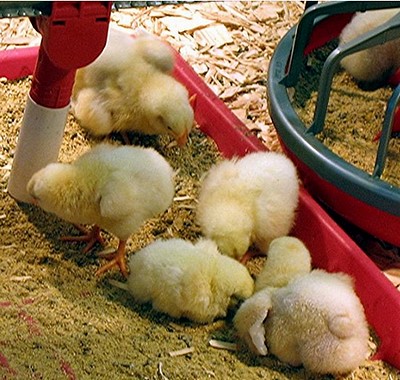




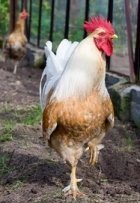
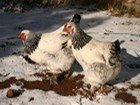
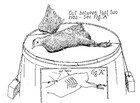
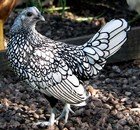
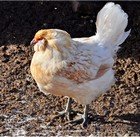
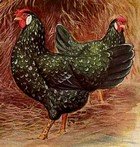
New! Comments
Do you have something of value to add? Leave me a comment in the box below.